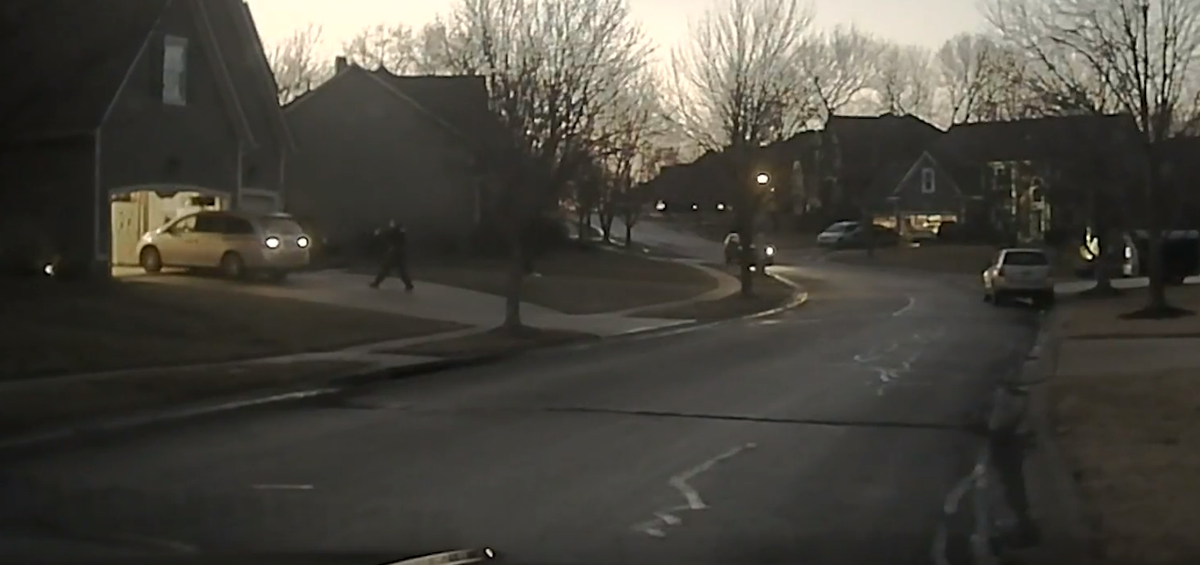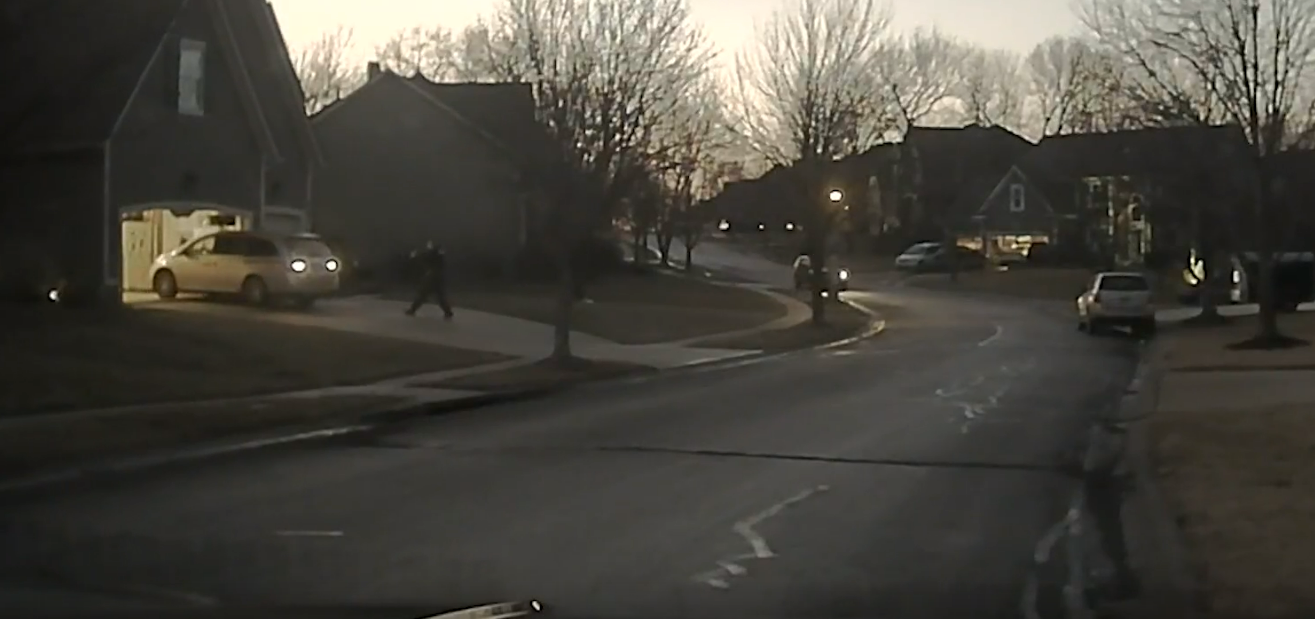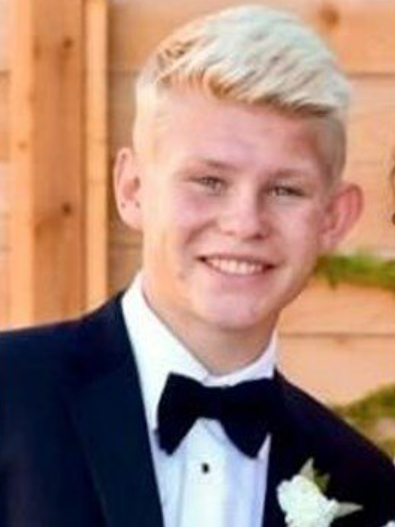
A recent forensic investigation conducted by The Washington Post is raising new questions about a Missouri police department’s possible mishandling of a 2018 officer-involved shooting of a teenager.
On Tuesday, the outlet’s visual forensics team published a 20-minute documentary that pasted together evidence from a nearly 500-page police investigative report, which was originally released by the city of Overland Park after being sued by KSHB-TV.
The Post report included a damning 3D reconstruction of the night that 17-year-old John Albers was fatally shot by an officer 13 times after he attempted to back out of his driveway with his family’s van.
On the evening of 20 January 2018, 911 dispatchers received two calls regarding the well-being of John, a Blue Valley Northwest High School junior, who was at the time said to be at his family home with either the intention of harming himself or having already done so, court documents said.
Dashcam footage, later released with the police investigative report, showed Overland Park Officer Clayton Jenison arriving at the family home alongside other patrol cars.
The officer then reportedly shot at the teen 13 times after he began to pull out of the family’s garage in their minivan, at a speed that an expert later determined to be roughly 2.5mph, according to KSBH.

The shooting of the teen prompted national outcry over police violence, after the officer responsible for the young man’s death – Mr Jenison – was cleared of any charges in an investigation overseen by the Johnson County District Attorney’s Office.
Mr Jenison, who contended during the sole 45-minute interview conducted after the shooting that he “thought [John] was going to run me over”, was later given a $70,000 severance for leaving the department.
During his interview with investigators, he said that “from my memory, it felt it was going fast enough to be a threat and to cause bodily harm to me.”
The prosecutor in Johnson County, Kansas, Steve Howe, who oversaw the investigation, declared within a month of opening the probe that the fatal shooting was justified, noting that officers are entitled to use deadly force “if they reasonably believe it is necessary to prevent death or great bodily harm to themselves or someone else.”
That argument of fearing “great bodily harm”, however, is challenged in the Post’s investigative film, during which the visual team renders a 3D version of the Albers’ family home and recreates the moments leading up to John’s death, relying on dashcam footage, police reports and surveillance video.
In the video, the team’s simulation of events purports to show that Officer Jenison, who argued that he was in the direct path of the backing up vehicle, was to the side of the van and not directly in its way when he fired his gun.
“It is incredibly difficult to watch, it re-traumatises me,” said Sheila Albers, John’s mom, about watching the film in an interview with The Kansas City Star.
Also brought to the fore in the short documentary are the testimonies of five law enforcement and use-of-force experts from across the country, who point out that one of the more central elements missing from the investigation into Mr Jenison’s conduct is a scene diagram, which are commonly performed in officer-involved shootings.
“It’s affirming to what we have been saying all along and that is there was a false narrative created by OPPD and the DA to paint a picture in favor of the officer. And to watch the facts laid out in such an objective way and then to hear law enforcement experts from across the country who have years of experience in these investigations to publicly say the investigation was done so poorly, I am hoping creates momentum for change,” Ms Albers added.
In a separate part of the investigation, the Post interviewed a California sheriff’s deputy who’s trained in overseeing investigations of officer-involved shootings. During this segment, Ed Obayashi, the law enforcement expert who reviewed the case file, describes how the interview with Officer Jenisin is what he sees as “the most glaring flaw of the entire investigation”.

“All they did was one short interview,” he says in the video, noting that the entire questioning period lasted less than 45 minutes. Follow-up interviews, he adds, are important for advancing the investigation and are an essential part of every case.
“We always go back to the witnesses and reinterview them. There’s no reason the officer wouldn’t consent to a follow-up,” Mr Obayashi told the Post.
The video investigation is just the latest in an ongoing dispute with the DA’s findings, as federal authorities announced in September 2020 – two years after the fatal shooting – they’d be opening a civil rights investigation into the incident.
“[The FBI will] collect all available facts and evidence and will ensure that the investigation is conducted in a fair, thorough and impartial manner,” a spokeswoman for the federal agency said in a statement shared with NBC News at the time it was announced.
The Kansas City field office is reportedly working alongside the US attorney’s office in Kansas and the Department of Justice’s Civil Rights Division, while the federal agency said in previous reports that it was unable to comment further on the probe, citing the ongoing investigation as the reason.
The Post presented their findings to both Shawn Reynolds, the leader of the investigation as a former deputy chief in Olathe, Kansas, Mr Howe, the district attorney of Johnson County, but both declined to discuss the probe.
Separately, a spokeswoman for the DA’s office said when contacted by The Kansas City Star, that many of the conclusions in the Post’s investigation were “factually incorrect”.
The DA’s office is “unable to comment about this case while a federal investigation is ongoing,” said Melody Webb, a spokeswoman with the DA’s office.
The Independent reached out to the Overland Park Police Department and the Johnson County District Attorney’s Office for comment but did not hear back immediately.
A spokesperson for the City of Overland Park informed The Independent that the city was aware of the Post video but did not provide further comment on the contents of their findings.







